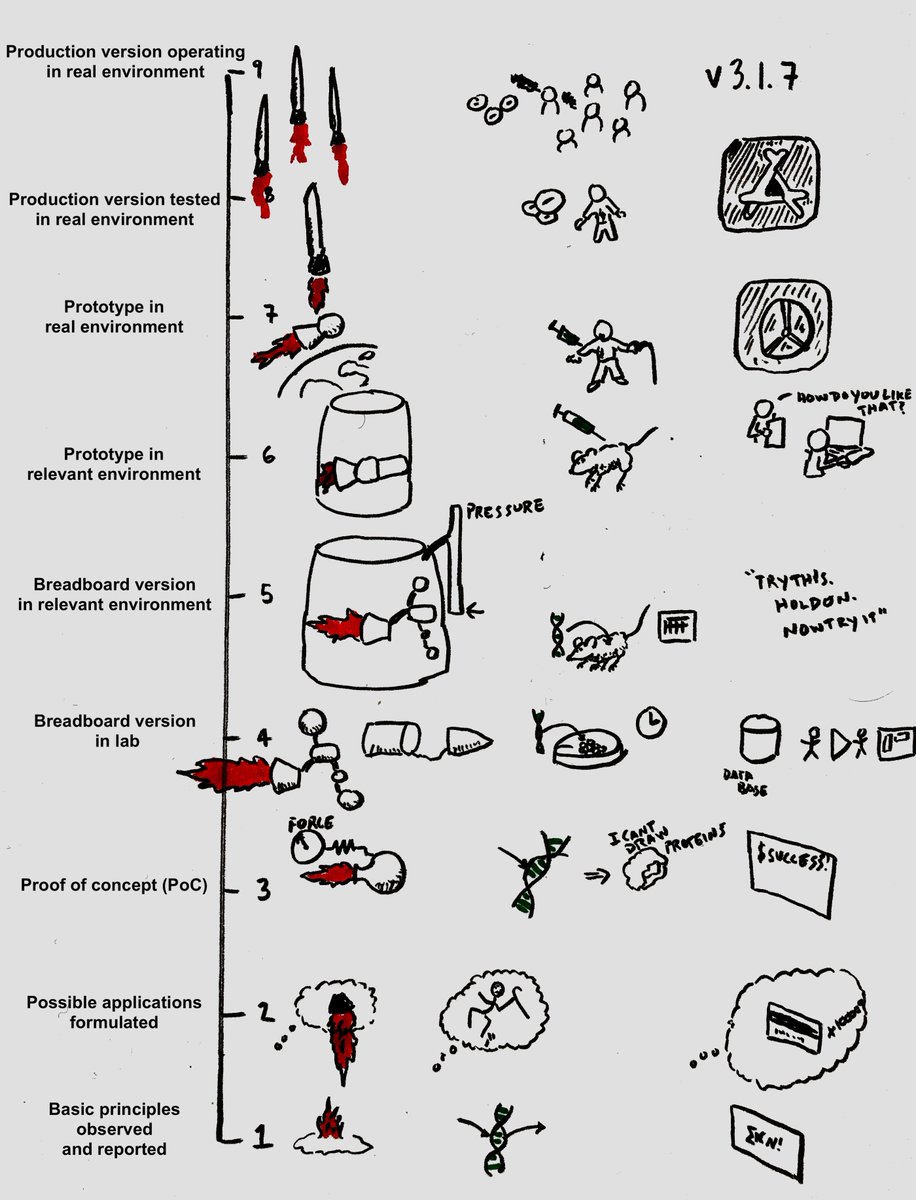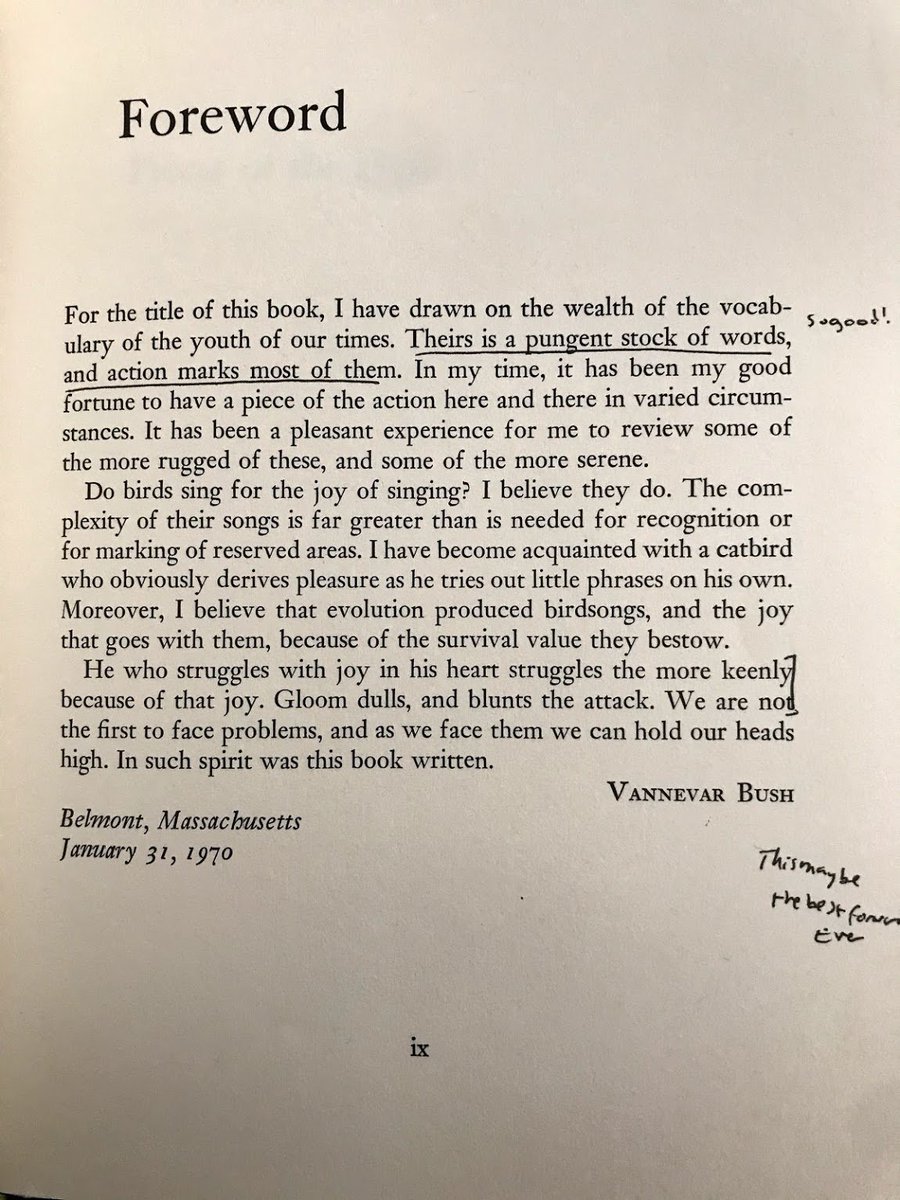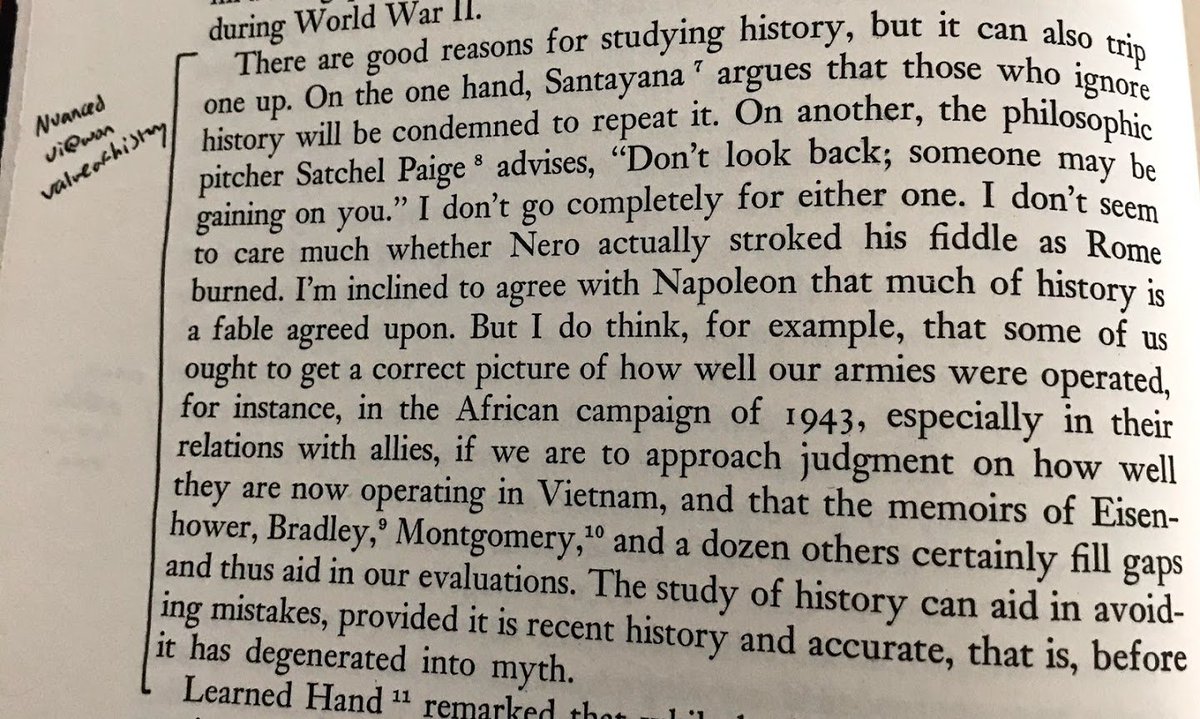It's a great framework for communicating a technology's maturity and it's time for them to be used outside of aerospace.
benjaminreinhardt.com/trl

In the world of atoms TRL1 is reporting on an observed phenomenon. In the world of bits TRL1 means showing the properties of an algorithm and maybe writing some pseudocode.
"Hey look! Kerosine tends to explode"
TRL2 is where people speculate about the possible uses of a technology.
"We might be able to use kerosine to launch rockets..."
If TRL 2 is saying that you can use X for Y, TRL 3 is showing that you can use X for Y.
"Let's use kerosine to produce enough force to lift something into the air"
This is the first time that you assemble all the components of the ‘real’ system. You need to have at least a simulacra of every piece of the real system.
"Let's set up a separate pump, compressor, and nozzle that produce force"
Now you're in a ‘relevant’ environment. What does it mean to go to a ‘relevant’ environment? It has to do with giving up control over the exact inputs.
"Let's put everything in a vacuum chamber"
What’s the difference between a prototype and a ‘breadboard version?’ It’s all about the interfaces and the container.
"We've created a one-off assembly of those pieces and shown they still work in the vacuum chamber"
In traditional NASA TRLs ‘real’ means ‘space’ but it turns out many technologies aren’t intended to be used in space. Yet.
"We've launched that assembly as a secondary payload and shown it still works in space"
This difference has a lot to do with manufacturability.
"We've manufactured the actual rocket and launch something with it for the first time!"
A TRL9 technology is just a TRL8 technology that has been in the field long enough to have operational problems surface and fix them.
"LAUNCH ALL THE THINGS"




